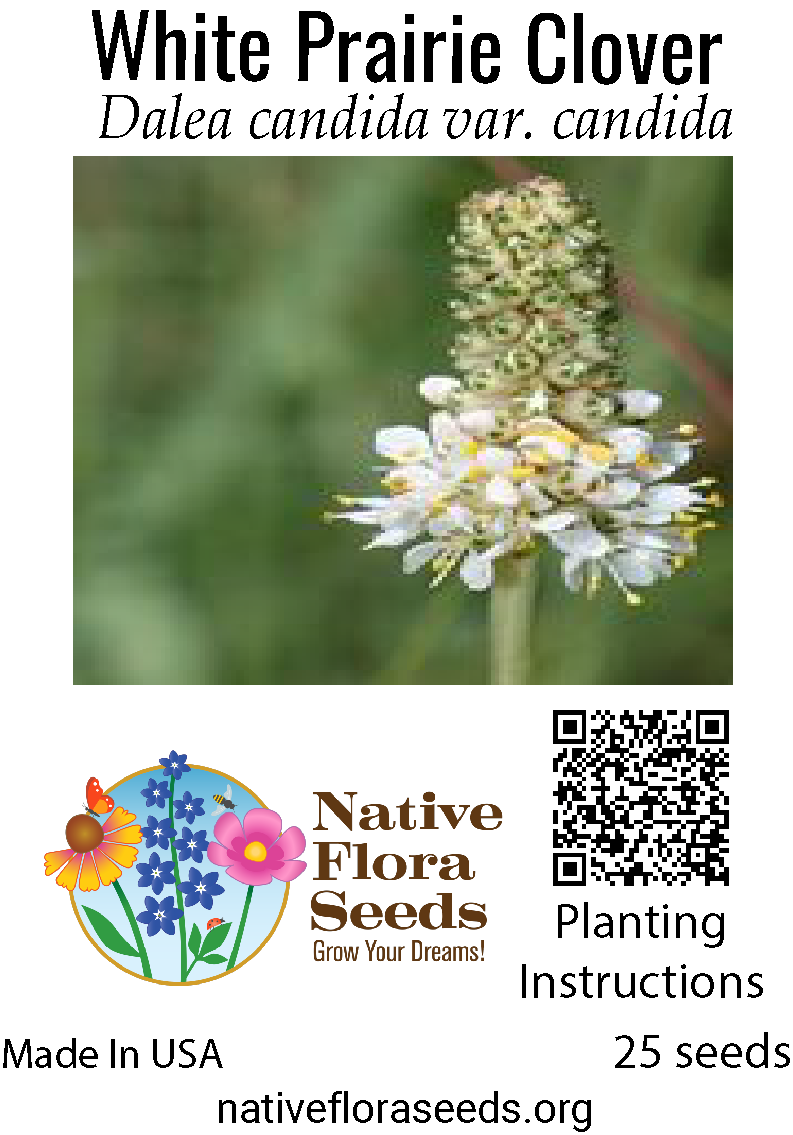Planting Instructions
Dalea candida, commonly known as White Prairie Clover, is a beautiful and hardy native plant that's great for adding a touch of white to your garden while supporting pollinators. Here's a guide to growing it from seed:
Dalea candida (White Prairie Clover) Growing Guide
Site Selection
Sunlight: White Prairie Clover thrives in full sun, needing at least 6 hours of direct sunlight daily.
Soil: It prefers well-drained soils and is particularly well-suited to dry, sandy, or gravelly soils. It can tolerate clay soils as long as drainage is good.
Location: Choose a sunny spot in your garden, meadow, or naturalized area. It's a great addition to butterfly gardens or areas where you want to support native plants and pollinators.
Direct Sowing Outdoors
Fall Planting:
Timing: Sow seeds in the fall, a few weeks before the first expected frost. This allows the seeds to undergo natural stratification over the winter.
Preparation: Clear the planting area of weeds and debris. Lightly loosen the soil surface.
Sowing: Scatter the seeds evenly over the soil surface. Gently press them into the soil or cover with a very thin layer of soil (no more than 1/4 inch).
Watering: Water the seeds gently but thoroughly. Keep the soil consistently moist until germination.
Spring Planting:
Timing: Sow seeds in the spring, after the last expected frost.
Preparation: Follow the same soil preparation steps as for fall planting.
Sowing: Scatter seeds and lightly press them into the soil, covering with a thin layer of soil (no more than 1/4 inch).
Watering: Water gently and keep the soil consistently moist until germination.
Starting Seeds Indoors
Timing: Start seeds indoors 8-10 weeks before the last expected frost in your area.
Preparation: Use seed starting trays or pots filled with a well-draining seed starting mix.
Sowing: Sow seeds about 1/4 inch deep in the seed starting mix.
Stratification: While not always required, White Prairie Clover seeds can benefit from cold stratification to improve germination rates. You can mimic this by placing the seed trays or pots in the refrigerator for 30 days before sowing.
Germination: Keep the seed starting mix consistently moist and provide adequate light (grow lights or a sunny window). Germination typically occurs within 1-3 weeks.
Transplanting: Once the seedlings have developed a few sets of true leaves, they can be transplanted outdoors. Harden off the seedlings gradually by exposing them to outdoor conditions for increasing periods each day before transplanting.
Seed Scarification
Scarification can improve germination rates, especially if you're not stratifying. Gently rub the seeds with sandpaper or soak them in hot water for a few minutes.
Maintenance Tips
Watering: Once established, White Prairie Clover is very drought-tolerant due to its deep taproot. Water occasionally during prolonged dry spells, but avoid overwatering.
Fertilizing: White Prairie Clover does not require heavy fertilization. A light application of a balanced fertilizer in the spring can be beneficial.
Deadheading: If you want to prevent self-seeding, remove seed heads before they mature and split open.
Pest and Disease Control: White Prairie Clover is generally pest and disease resistant.
Support: White Prairie Clover usually does not need staking.
Invasiveness
White Prairie Clover is not considered invasive. It can spread by self-seeding, but it is not aggressive.
Important Notes
White Prairie Clover is a valuable plant for supporting pollinators, especially bees and butterflies.
It is a long-lived perennial that is well-adapted to dry, challenging conditions.
It is a native plant that supports local ecosystems.



